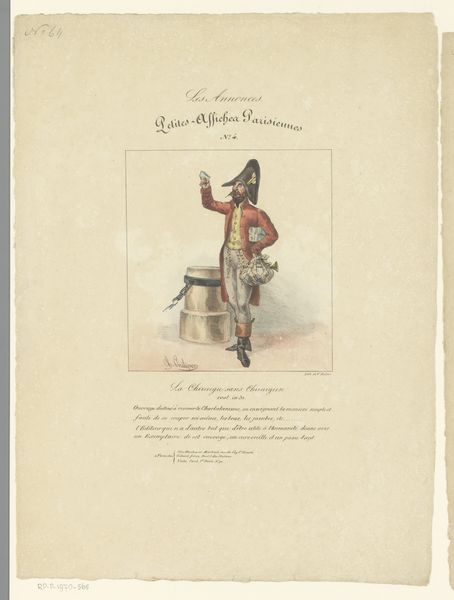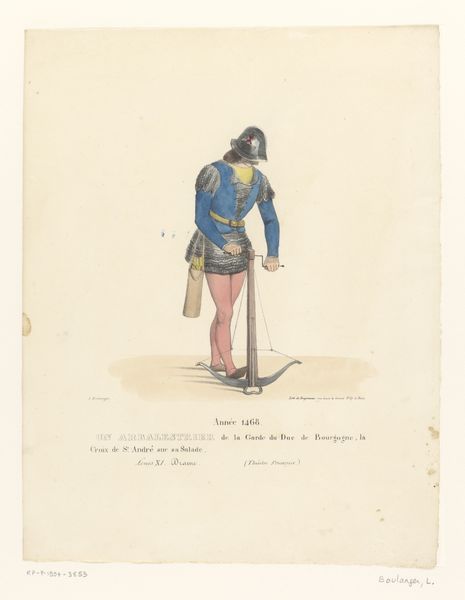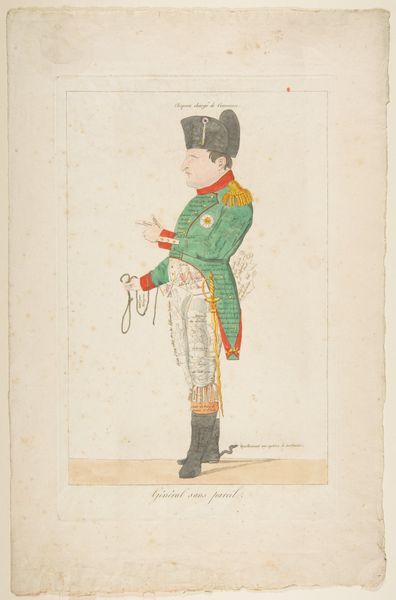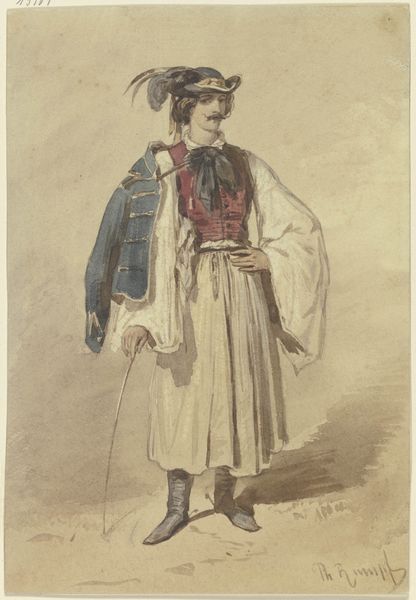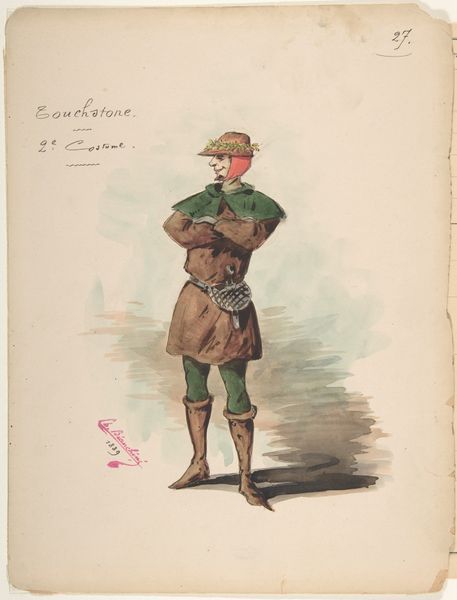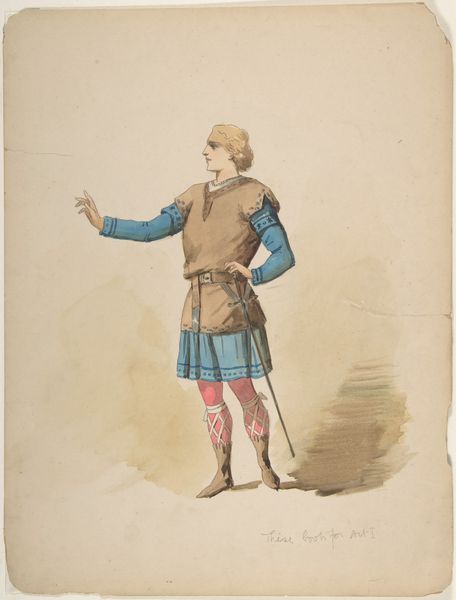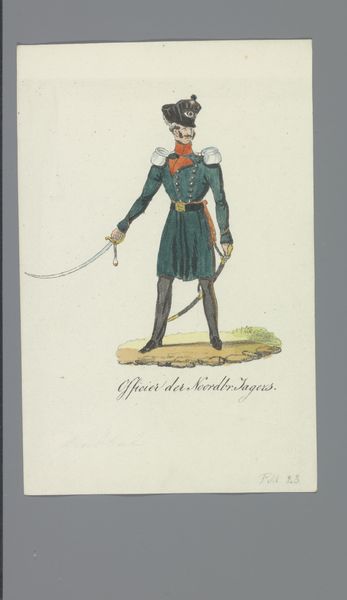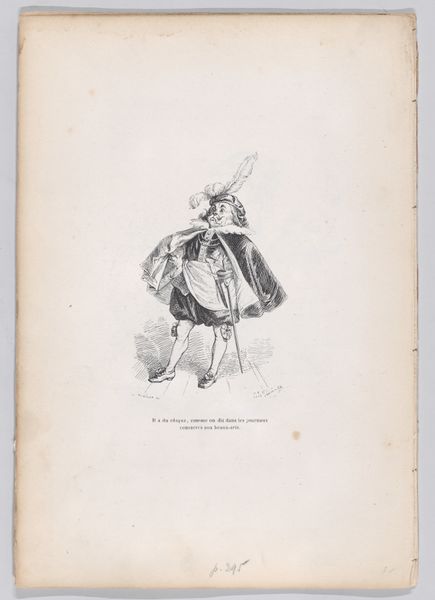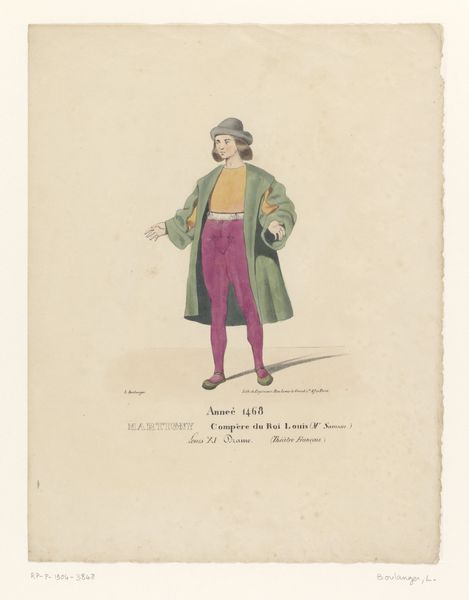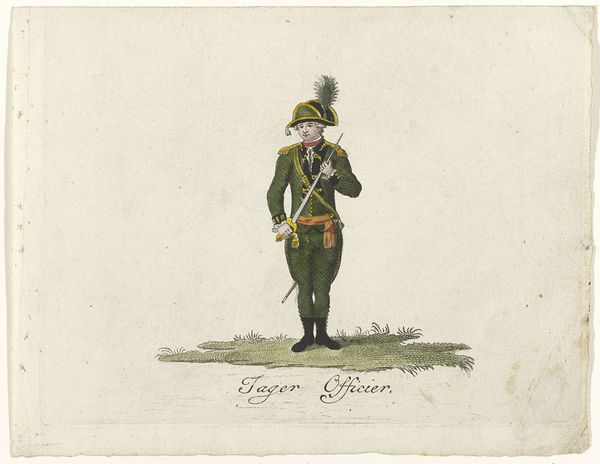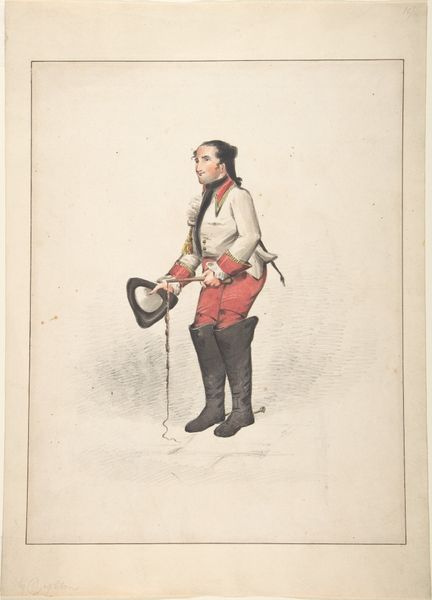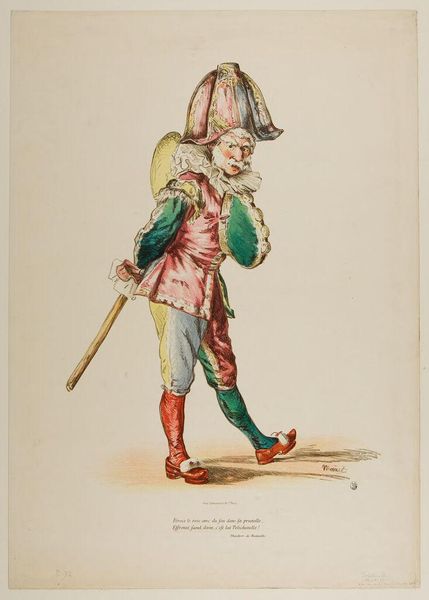![Costume Design for "Officiers du duc Frédéric" [a]; Descriptive Sheet of Costume Accessories [b] by Charles Bianchini](/_next/image?url=https%3A%2F%2Fd2w8kbdekdi1gv.cloudfront.net%2FeyJidWNrZXQiOiAiYXJ0ZXJhLWltYWdlcy1idWNrZXQiLCAia2V5IjogImFydHdvcmtzLzBkYjJiZTc4LTFjNjYtNGNjYy04MGFlLTYxYjhhNmI5NjYwOS8wZGIyYmU3OC0xYzY2LTRjY2MtODBhZS02MWI4YTZiOTY2MDlfZnVsbC5qcGciLCAiZWRpdHMiOiB7InJlc2l6ZSI6IHsid2lkdGgiOiAxOTIwLCAiaGVpZ2h0IjogMTkyMCwgImZpdCI6ICJpbnNpZGUifX19&w=3840&q=75)
Costume Design for "Officiers du duc Frédéric" [a]; Descriptive Sheet of Costume Accessories [b] 1889
0:00
0:00
drawing, coloured-pencil, print, watercolor
#
portrait
#
drawing
#
coloured-pencil
# print
#
watercolor
#
coloured pencil
#
men
#
costume
#
watercolour illustration
#
history-painting
#
watercolor
Dimensions: 12 3/8 x 9 7/16 in. (31.4 x 23.9 cm)
Copyright: Public Domain
Curator: This work, dating back to 1889, presents costume designs for "Officiers du duc Frédéric". It's attributed to Charles Bianchini and showcases his talent with colored pencil and watercolor. Editor: My first impression is of an intense, almost theatrical formality. The colors are quite vibrant considering the age, and the detailing on the armor appears very intricate. Curator: Absolutely. Bianchini was a master of detail. His illustrations provide insights into late 19th-century perceptions of historical dress. This would have been used as a guide for theatrical productions, shaping the visual representation of the past for audiences. Editor: The materiality is intriguing here. The choice of watercolor and pencil allows for both a precise outline and a certain softness in the color washes, giving the design depth. Consider the labor involved in such detailed renderings – it speaks to a specific mode of production for theatrical arts. Curator: It is indeed indicative of a period where historical accuracy, or at least the impression of it, was highly valued in theater design. These drawings were part of a larger system where costume design played a key role in conveying social status, character, and historical context. Editor: The costume itself, beyond its visual appeal, suggests particular social constraints. All that metalwork – who made it, who wore it, what were the economics of clothing someone in this manner? Curator: These drawings offer us more than just aesthetics; they act as social documents, reflecting the intersection of art, theater, and societal values in late 19th-century Europe. The depiction of historical dress also tells us something about contemporary preoccupations and aspirations. Editor: Agreed. I see a real tension here, between art as documentation, and art as artifice. I'm left wondering about the cultural forces at play when deciding what "historical" even looks like on stage. Curator: Reflecting on it, it's fascinating how something designed for the fleeting experience of a stage performance can offer us such a rich understanding of history and artistic process today. Editor: Precisely. This blend of materiality and historical performance opens avenues for appreciating craft, labor, and theatrical convention within a socio-historical frame.
Comments
No comments
Be the first to comment and join the conversation on the ultimate creative platform.
